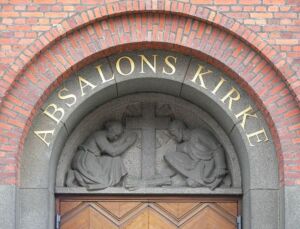News
Hate prayers, love the building: the changing face of Danish churches
This article is more than 9 years old.
Samuels Kirke, Blågårds Kirke and Absalons Kirke are all enjoying success as locales of a different kind

The founder of Copenhagen would be proud of the principles of this new establishment (Photo by Ib Rasmussen)
It would appear that while Danes are avoiding church in greater numbers than ever before, they have no problem with the actual buildings!
READ MORE: More Danes go to church on All Saints’ Day than Easter Sunday
A 2013 initiative to sell Copenhagen churches into private ownership has been a great success as the new owners breathe new life into the buildings, reports DR.
Special settings
Samuels Kirke and Blågårds Kirke in Nørrebro, along with Absalons Kirke in Vesterbro, have been respectively converted into student housing, a concert venue and a community centre.
READ MORE: 14 Copenhagen churches slated for closure
Referring to the latter two, Jes Heise Rasmussen, a PhD student at Roskilde University, told DR the churches had an advantage as they have “special architecture and history”.
A new chapter
Absalons Kirke on Sønder Boulevard, which opened the latest chapter of its life in the summer of 2015 – a marked contrast to Chapter One of Genesis – welcomes a sellout 200 people to communal meals every night, providing its visitors with events, activities and access to affordable food.
READ MORE: Prospects of the City: Celebrating a space where community can flourish
“It is much more popular than when it was a normal church. For us it is about bringing people together,” Noah Lajboschitz, the son of Absalon – and retail chain Tiger – owner Lennart Lajboschitz, told DR.
Acoustics and accommodation
Blågårds Kirke at Blågårds Plads has hosted 200 concerts in the last year, and it is also developing a reputation as a makeshift recording studio. “Several bands use it because the acoustics are so great,” employee Melina Munk told DR.
READ MORE: Blågårds Kirke in Nørrebro sold to become a concert venue
Meanwhile, Samuels Kirke on Bragesgade will from next summer have 32 affordable one-room apartments for young people. The waiting list opens on January 1. The average rent will be between 4,500 and 5,000 kroner, according to VIBO, the housing company in charge of the development.










































